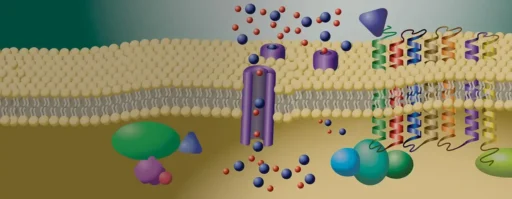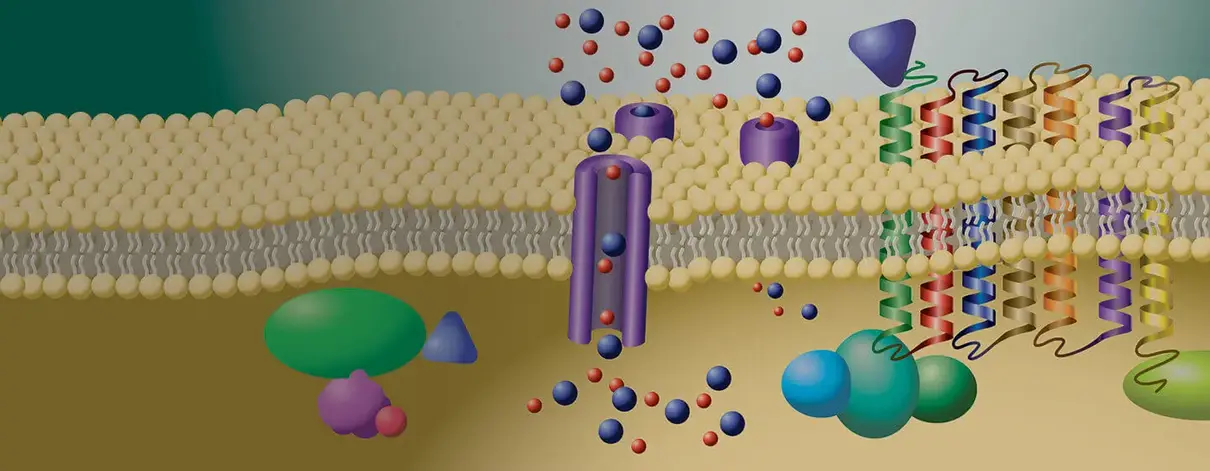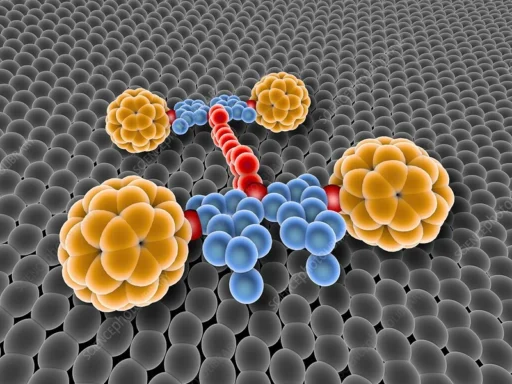Table of Contents
Introduction to G-Protein-Coupled Receptors (GPCRs):
G-protein-coupled receptors (GPCRs) form a complex network of proteins that play a vital role in cellular communication and regulation. Gaining a comprehensive knowledge of the organization, operation, and importance of these components in living organisms is essential for progress in the development of new medications and medical treatments. This article examines the intricacies of GPCRs, investigating their intricacy, obstacles, recent breakthroughs, and future possibilities.
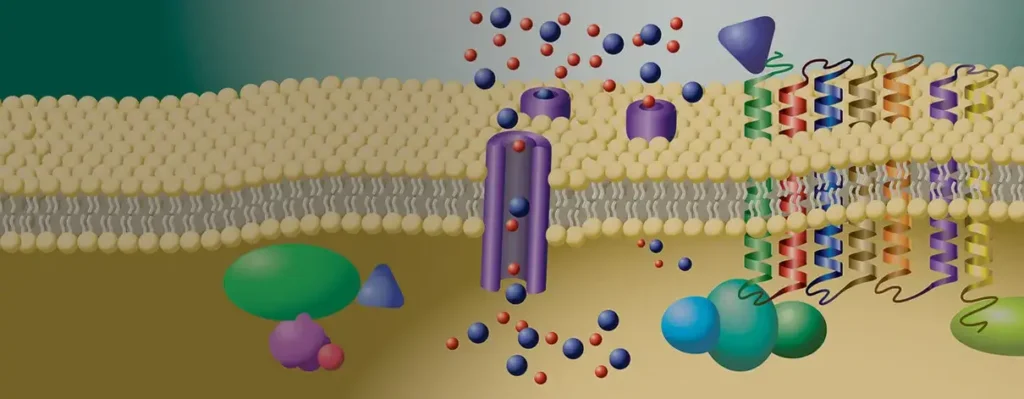
Structure and Function of G-Protein-Coupled Receptors:
The topic of discussion is the structure and function of GPCRs, specifically focusing on the structure of GPCRs.
Structure of G-Protein-Coupled Receptors (GPCRs):
The core of GPCRs is characterized by a unique structure consisting of seven transmembrane domains. The structure of GPCRs, which consists of an external N-terminus, an intracellular C-terminus, and connecting loops, allows them to interact with various ligands such as hormones, neurotransmitters, and pharmaceutical medicines.
Function of G protein-coupled receptors (GPCRs):
When a ligand binds to GPCRs, it causes the GPCRs to change their shape, which then triggers intracellular signaling cascades that are mediated by G proteins. These signaling pathways control a wide range of physiological responses, including the regulation of gene expression and the modulation of ion channel function.
Importance of G-Protein-Coupled-Receptors (GPCRs):
The importance of G protein-coupled receptors (GPCRs) in biological systems and their function in cell signaling.
Role in Cell Signaling:
G protein-coupled receptors (GPCRs) coordinate a variety of biological functions, such as sensory perception, neurotransmission, control of immunological response, and regulation of hormones. Their capacity to convert external signals into internal reactions is crucial for maintaining cellular balance.
Significance in the field of pharmaceuticals:
Due to their significant role in various disorders, GPCRs are extensively utilized as therapeutic targets in the pharmaceutical sector. More than 33% of prescription medications specifically focus on G-protein coupled receptors (GPCRs), highlighting their crucial role in the process of discovering and developing pharmaceuticals.
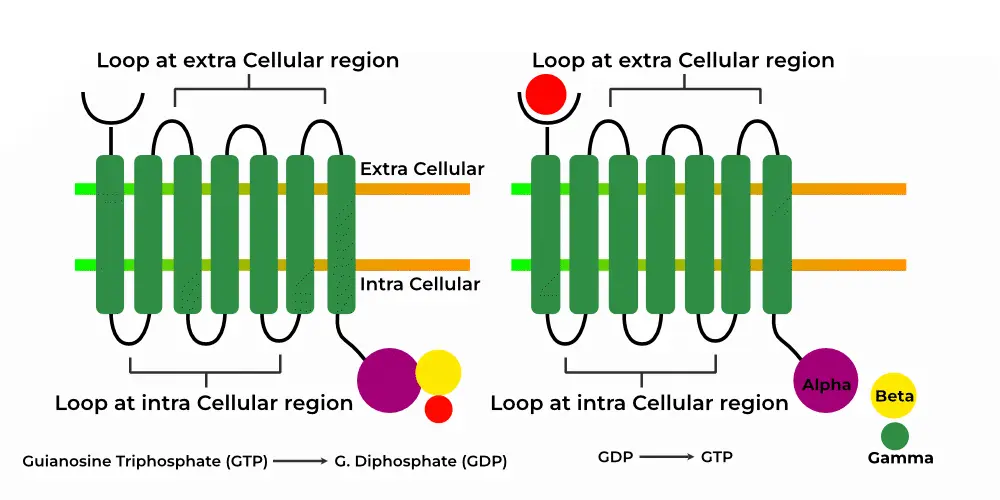
Techniques for Investigating G-protein-Coupled Receptors:
a). Traditional Methods:
Techniques for Investigating G Protein-Coupled Receptors (GPCRs) Traditional Methods
In the past, GPCR research heavily depended on traditional pharmacological and biochemical methods, including ligand binding tests, mutagenesis studies, and functional assays. These methods established the foundation for comprehending GPCR signaling circuits.
b). Contemporary methodologies:
Technological advancements, such as X-ray crystallography, nuclear magnetic resonance (NMR) spectroscopy, and cryo-electron microscopy (cryo-EM), have completely transformed GPCR research. These approaches provide never-before-seen insights into the structure and function of GPCR at extremely detailed levels.
Difficulties with GPCR Research:
1). Complexity of structure:
Although there have been improvements in technology, understanding the complex and adaptable characteristics of GPCR structures is still difficult. Acquiring high-resolution structures that accurately depict different conformational states is essential for comprehending their activation mechanisms.
2). Specificity of Ligands:
An additional problem arises when attempting to clarify the precise binding selectivity of GPCRs for ligands. GPCRs display a wide range of ligand-binding patterns, and comprehending their selectivity is crucial for the advancement of drug discovery.
3). Functional diversity:
The study of G protein-coupled receptors (GPCRs) is made more complex by their functional diversity, which stems from their capacity to interact with various G proteins and signaling pathways. Understanding the complexities of these signaling networks is crucial for effective therapeutic targeting.
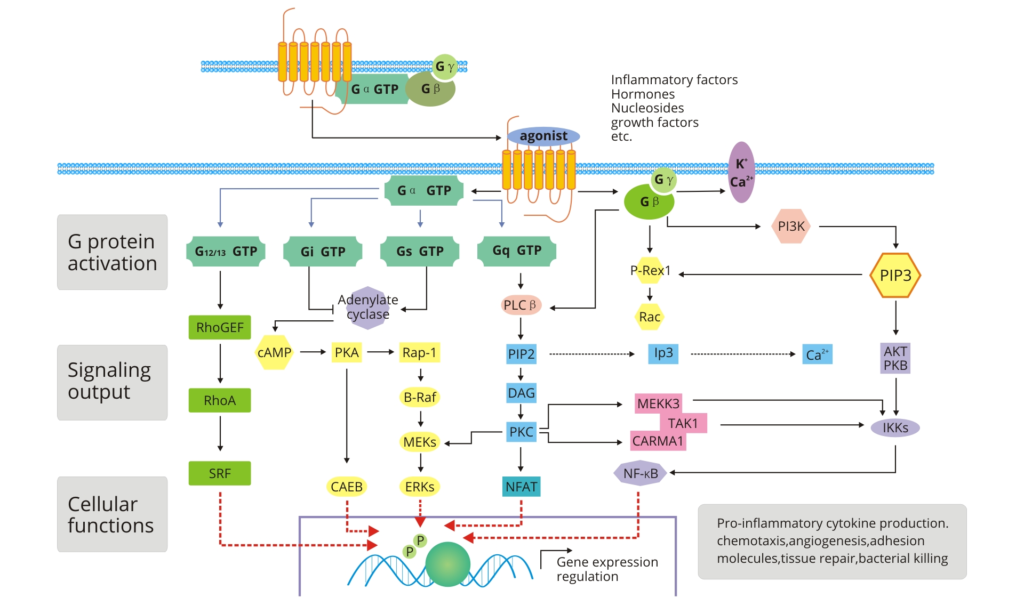
Advancements in GPCR Research in Recent Times:
a). Cryo-Electron Microscopy (Cryo-EM):
Cryo-electron microscopy (Cryo-EM) has become a highly effective technique for observing the structures of G protein-coupled receptors (GPCRs) with a level of detail close to atomic resolution. This method has offered vital knowledge on how ligands bind and receptors are activated.
b). Drug discovery targeting G protein-coupled receptors (GPCRs):
The progress in computational modeling, virtual screening, and structure-based drug design has sped up the finding of new medicines that target GPCR. These methods show potential for creating medications that are more targeted and effective.
Application of G-Protein-Coupled Receptors Research:
a). Drug Development:
GPCR research has various applications, one of which is drug development.
GPCR-targeted medications are employed for the treatment of many maladies, such as cardiovascular ailments, neurological disorders, and cancer. The variety of GPCR signaling pathways presents possibilities for creating novel therapeutic approaches.
b). Diseases Treatment:
Treatment of diseases Comprehending GPCR signaling pathways has implications for the management of diverse medical conditions, including diabetes, schizophrenia, and inflammatory illnesses. Targeted medicines that aim to modify GPCR activity show potential for personalized medicine strategies.
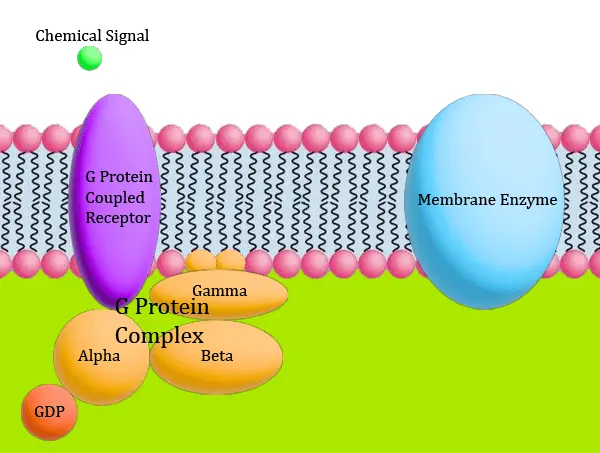
Prospects for Advancements in GPCR Research:
1). Focusing on Orphan GPCRs:
Unidentified endogenous ligands for orphan GPCRs present an unexplored opportunity for therapeutic development. Examining the roles and determining specific molecules that bind selectively present new opportunities for medical treatment.
2). Precision Medicion:
A medical practice that tailors treatment and prevention strategies to individual patients based on their unique genetic, environmental, and lifestyle factors.
The progress in genetics and pharmacogenomics allows for the creation of customized treatments that focus on particular GPCR variations. Customizing therapy according to an individual’s genetic profile has great potential for enhancing patient outcomes.
In conclusion:
The investigation of G-protein-coupled receptors (GPCRs) is a constantly changing and developing area of study that has significant ramifications for the fields of biology and medicine. Notwithstanding obstacles, contemporary technology breakthroughs and inventive research methods persistently enhance our comprehension of GPCR structure, function, and pharmacology. There are promising prospects in the future for using this knowledge to create new treatments and progress in precision medicine.
FAQs (Frequently Asked Questions):
1). What are G-Protein-Coupled Receptors?
G-protein-coupled receptors (GPCRs) are a type of cell surface receptor that plays a crucial role in signal transduction. They are involved in various physiological processes and are characterized by their ability to interact with G proteins to initiate intracellular signaling pathways.
GPCRs, or G protein-coupled receptors, are a wide-ranging group of receptors found on the surface of cells. They play a crucial role in transmitting signals within cells and are essential for a variety of physiological activities.
2). By what mechanism do G protein-coupled receptors (GPCRs) convey signals to the inside of the cell?
G-protein coupled receptors (GPCRs) establish intracellular signaling cascades when a ligand binds to them, which in turn activates downstream effector molecules like G proteins.
3). Why GPCRs play a crucial role in drug discovery due to their significance?
GPCRs are highly desirable targets for drug development because of their significant role in a wide range of disorders, rendering them crucial for the creation of effective treatments.
4). What difficulties arise when investigating GPCRs?
Challenges arise from the intricate structure, specificity to ligands, and wide range of functions, necessitating the use of new research methods.
5). What is the importance of specifically focusing on orphan G protein-coupled receptors (GPCRs)?
Targeting orphan G protein-coupled receptors (GPCRs) offers the potential for identifying new pharmacological targets and creating treatments for unaddressed medical conditions.
For more chemistry blogs, visit chemistry master

